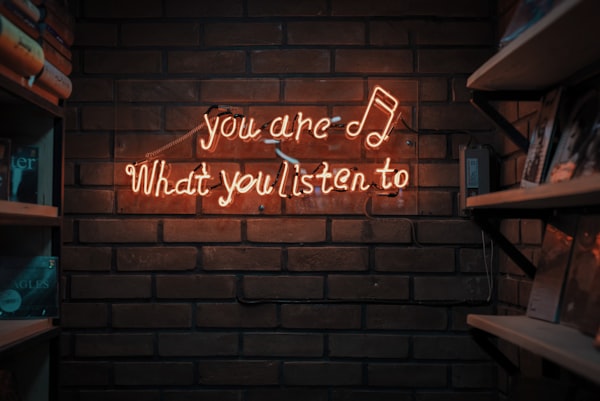1. Understanding the Power of Engaging Blog Content
Ah, the elusive art of engagement! It's a bit like creating the perfect soufflé: too much of one thing and it flops, too little of another and it's as exciting as watching paint dry. But get it just right and voila! You've created a content masterpiece that'll have your readers hooked faster than a cat chasing a laser pointer.
Engaging blog content isn't just about writing words on a page. Oh no, it's so much more. It's about creating a virtual party, where your readers feel like the guests of honor. It's your digital red carpet, where every word entices, every sentence fascinates, and every paragraph leaves them wanting more. Like a cleverly spun web, it draws readers in and – most importantly – keeps them coming back for more.
And why is this important, you ask? Because an engaged audience is like the magic ingredient in your blog's success recipe. The more your content resonates, the longer readers stick around, improving metrics like time-on-page, bounce rate, and return visitor rate. Not to mention, Google loves to see engaging content, rewarding your blog with higher search engine rankings. All this combined makes engaging content the secret sauce for your blog’s success.
It’s a potent combination of art and science, really. Yes, you heard it right! The art comes from your unique voice, your storytelling prowess, your engaging narratives. The science? Well, that's all about understanding your audience, strategically placing keywords, and crafting your content in a way that's optimized for search engines. And that, my friend, is the power of engaging blog content.
2. How to Identify and Cater to Your Blog Audience
Imagine showing up to a Star Trek convention dressed as Darth Vader. Not the best move, right? Similarly, failing to identify and cater to your blog audience is a bit like that - you risk standing out for all the wrong reasons!
Identifying your audience is like drawing a map of where you want to go. It involves understanding who they are, what they like, and how they consume content. To do this, you can delve into audience analytics, survey your readers, or even stalk (in a totally non-creepy, very professional way) your competitors' followers.
But it's not just about recognizing who they are; it's also about understanding their needs, desires, and quirks. Are they night owls or early birds? Do they prefer short, snappy posts or long, in-depth reads? Are they more into memes and emojis, or do they appreciate a well-placed literary quote?
Catering to your audience then involves writing content that resonates with them. It's like cooking their favorite dish, but instead of spices, you're using words, and instead of a plate, you're serving it on your blog.
Think of SEO keywords as the secret ingredients. They're the words and phrases your audience uses when they're searching for content like yours on Google. Integrating these keywords naturally into your content helps Google to match your blog with the people looking for it.
Essentially, identifying and catering to your audience means treating them like royalty. Remember, in the kingdom of content, the reader is king (or queen, or whatever regal title they prefer). The more you tailor your content to their tastes, the more they'll eat it up. And just like that, you're on your way to creating an engaging blog that keeps readers coming back for more.
3. Choosing the Right Blog Topic: A Crucial Engagement Factor
Ah, the million-dollar question: what in the world should you write about? Choosing a blog topic is a bit like selecting the perfect outfit. You want something that stands out, but is still comfortable and represents who you are. Or, in this case, represents your audience and your brand.
See, the right blog topic is the golden ticket to the chocolate factory of reader engagement. The perfect topic is like catnip for your readers: it's irresistible, alluring, and makes them purr with delight.
Now you may be thinking, "Great, but how do I choose this mythical perfect topic?" Well, it's a blend of intuition, research, and good ol' fashioned SEO.
Start by listening to your audience. What are they asking? What are their pain points? Sometimes, the best topics come from a simple question from one of your readers. Or perhaps there's a popular topic in your industry that's just begging for your unique spin.
Next, do a bit of sleuthing. What are the trending topics in your niche? A tool like Google Trends or BuzzSumo can be your magnifying glass here, helping you uncover popular topics that resonate with your audience.
Then, marry your chosen topic with relevant SEO keywords. This isn't just a sprinkle of random keywords; it's about selecting terms and phrases your audience would use to find information on your topic. Tools like SEMRush or Google Keyword Planner are the sous chefs in your keyword kitchen, helping you to whip up a delicious, SEO-friendly blog post.
So put on your Sherlock Holmes hat, do your research, and let your audience's needs guide you. Choosing the right blog topic isn't just crucial; it's the secret handshake that lets your readers know you're one of them, making your blog their go-to destination.
4. Creating Captivating Headlines to Hook Your Readers
Let's talk headlines. They're a bit like the first impression on a blind date. If it's bland and uninteresting, your reader's going to swipe left faster than you can say "SEO." But if it's captivating, unique, and promises something good to come? Now you've got them hooked.
Your headline is your foot in the door, your elevator pitch, your moment to dazzle. It's your reader's first interaction with your content, and it sets the tone for what they can expect. A good headline is like a fishing hook baited with your reader's favorite snack. It lures them in, makes them curious, and - if done right - gets them to bite.
So how do you create this unicorn of a headline? It's a bit like a perfect cocktail - it needs the right mix of elements.
Firstly, it should be clear and specific. Vague, generic headlines are about as exciting as watching grass grow. Your headline should let your readers know exactly what they're getting. If they can't tell what your post is about from the headline, you're doing it wrong.
Secondly, don't be afraid to add some spice. Use powerful, emotive words to engage your reader's feelings. 'Revolutionize,' 'uncover,' 'secrets' - words like these promise that the reader will gain something by reading your post.
Lastly, sprinkle in some SEO magic. Including your primary keyword in your headline helps Google understand what your post is about. It’s like a flashing neon sign to search engines, telling them your content is relevant to people searching for that keyword.
Remember, your headline is more than just the title of your post. It's your first chance to engage your reader, to hook them in, and promise them an interesting read. So put some thought into it, mix it well, and serve it chilled. Here's to creating headlines that keep readers coming back for more!
5. Utilising Visual Content for Increased Reader Engagement
Imagine walking into a museum, but instead of artworks and exhibits, all you find are endless pages of text. Not quite the experience you were hoping for, right? Similarly, a blog post without visuals is like a party without music - it lacks the pizzazz that makes it memorable.
In the realm of blogging, visual content is like the cherry on top of your delicious, well-baked content cake. It adds color, breaks up text, and most importantly, keeps your readers engaged.
Visual content could include images, infographics, videos, charts, or even well-placed GIFs. Why, you ask? Because our brains are wired to process visual information much faster than text. It's like giving your readers a high-speed train instead of a leisurely horse-cart ride through your content.
Using relevant images can help to illustrate your points, making your content more digestible. Infographics, on the other hand, can simplify complex information, making your blog post a breeze to understand. And videos? They can skyrocket engagement, because let's be honest, who doesn't enjoy a good video?
But remember, using visual content isn't about throwing in a random stock image and calling it a day. Oh no, it's about choosing or creating visuals that enhance your content and resonate with your readers.
And here's the kicker: visual content is great for SEO too. By properly using alt text with your images, you can help search engines understand what your visuals – and by extension, your post – are about. It's like giving Google a pair of glasses, helping it to 'see' your images and how they relate to your content.
So, don't be shy to spice up your blog with some visual flair. Remember, a picture is worth a thousand words, and the right visual can keep your readers engaged, entertained, and coming back for more.
6. Balancing Information and Entertainment in Your Blog Posts
Creating an engaging blog post is like hosting the perfect dinner party. Yes, you want to serve up delicious, informative content. But it's equally important to keep the atmosphere lively and entertaining. After all, no one wants to attend a party where they're force-fed facts with no time for fun.
You see, your readers come to your blog for a blend of information and entertainment, or as the cool kids like to call it, 'infotainment'. Too much information, and your post can feel like a dry, dusty textbook. Too much entertainment, and you risk diluting your message and losing your credibility.
So how do you strike the perfect balance? Picture yourself as a master chef, creating a sumptuous meal for your readers. Your informative content forms the hearty main course, giving your readers the substance they crave. Your entertaining elements, then, are the delightful garnishes and tantalising desserts that make the experience memorable.
The key is to present your information in an engaging way. Instead of dry, bulky paragraphs, break your information into bite-sized pieces. Use storytelling to bring your points to life. Inject humour where appropriate. Make your readers feel something, whether it's laughter, curiosity, or the warm fuzzies.
Meanwhile, ensure your entertaining elements are purposeful and support your information. A funny meme or clever joke can go a long way in keeping your readers engaged, as long as they contribute to your overall message. Think of them as the seasoning - they should enhance the flavour, not overwhelm it.
And remember, your SEO strategy plays a big role here too. Well-placed keywords, engaging headlines, and quality links can help guide your readers through your post, like breadcrumbs leading them through a forest of information and entertainment.
Balancing information and entertainment is an art. But once mastered, it's a surefire way to create blog posts that are not just consumed, but savoured, shared, and remembered. And isn't that the dream of every blogger?
7. Interactive Content: Boosting Engagement in Your Blog
Welcome to the age of interactive content, where passive scrolling is as outdated as dial-up internet. If your blog was a video game, interactive content would be the power-ups, the bonus levels, the secret doors - the elements that turn a simple play-through into an immersive adventure.
Interactive content is like the secret handshake of the blogging world. It invites your readers to become active participants, creating a two-way dialogue that’s more engaging than a traditional, one-way broadcast. It's the difference between watching a football match on TV and being on the field, feeling the thrill of the game.
So, what does interactive content look like? Think polls, quizzes, interactive infographics, calculators, or even augmented reality experiences. These tools not only add a layer of fun to your blog but also provide a more personalised experience for your readers.
For example, a quiz can help your readers test their knowledge or gain insights about themselves, making your content stickier than a honey-covered beehive. Or an interactive infographic could allow your readers to explore data at their own pace, turning a potentially overwhelming information dump into an engaging treasure hunt.
But wait, there's more! Interactive content also holds hands with SEO and skips happily down ranking lane. Search engines like Google prioritise content that keeps users engaged. So, when your interactive content leads to longer site visits and lower bounce rates, Google takes notice and says, "Hey, this site is providing value. Let's move it up in the rankings."
But remember, like a potent spice, interactive content should be used wisely. It should enhance your message, not distract from it. And, like all content, it should be crafted with your audience in mind. After all, the most engaging content is content that your readers find valuable and enjoyable.
So go forth, unleash the power of interactive content, and watch as your blog turns into an engagement powerhouse. Now that's what I call levelling up!
8. Optimizing Call to Actions for Maximum Blog Engagement
Roll up your sleeves and get ready, because it's time to dive into the action-packed world of Calls to Action (CTAs). A well-optimised CTA is like a treasure map that leads your readers to engage more deeply with your content. Without it, your readers may wander aimlessly through your blog, lost and disoriented.
CTAs are your prompts, your nudges, your gentle pushes that encourage your readers to take a specific action. It's like the end of a thrilling detective story, where you're guiding your readers to the climactic conclusion. That could be anything from subscribing to your newsletter, leaving a comment, sharing your post on social media, or even making a purchase.
Now, creating an effective CTA is part art, part science, and part mind-reading. Alright, perhaps not the mind-reading part, but you do need to understand your audience and what motivates them.
Firstly, your CTAs need to be clear, concise, and specific. Ambiguous or vague CTAs are about as useful as a chocolate teapot. Instead of "click here", how about "Download our free e-book"? Or instead of "learn more", try "Discover the 7 secrets to a healthier lifestyle". See the difference?
Next, remember that placement is key. Your CTA isn’t a wallflower, shyly hiding in a corner. It should be easy to find and strategically placed. Typically, that could be at the end of a blog post, but don't be afraid to experiment with other locations too.
Thirdly, make it stand out. Use contrasting colors, larger font sizes, or unique shapes to draw attention to your CTAs. They should be the shining beacon guiding your readers through your blog post.
Finally, don’t forget to sprinkle some SEO magic. Using relevant keywords in your CTA can help align it with your reader’s intent and improve your SEO rankings.
Remember, your CTAs are your blog's guiding stars, leading your readers to engage and interact in meaningful ways. So polish them, optimise them, and watch as they boost your blog's engagement to astronomical levels. Now, that's a call to action!
9. The Importance of Consistent Posting to Keep Readers Coming Back
Picture this: You find a charming little café. You try their scrumptious pastries, fall in love, and decide you're coming back next week for more. But alas, when you return, the café is closed. You try again the week after - still no luck. Disappointed and pastry-deprived, you eventually give up.
Similarly, inconsistent posting on your blog is a surefire way to disappoint your readers and make them question whether your blog is worth their time. In the world of blogging, consistency is king. Or queen. Or the reigning champion of keeping your readers engaged.
Consistent posting means regularly providing your readers with fresh, engaging content. It's like a TV show that airs a new episode every week - it gives your readers something to look forward to, and it's a reason for them to keep coming back.
But here's the catch - consistency isn't just about frequency; it's also about quality. A rush-job blog post is like a stale donut; nobody wants it. Your readers deserve your best work, so it's crucial to find a posting schedule that allows you to maintain high-quality content.
Consistency also extends to your tone of voice, topics, and branding. A consistent blog is like a dependable friend - it builds trust and familiarity, turning first-time visitors into loyal readers.
And let's not forget about our good friend, SEO. Search engines favor websites that regularly update their content, so a consistent posting schedule can give you a boost in the rankings. It's like sending Google a friendly reminder that you're still here, still relevant, and still creating awesome content.
In a nutshell, consistent posting is the heartbeat of an engaging blog. It keeps your content alive and kicking, and your readers coming back for more. So make a plan, stick to it, and watch as your blog transforms into a hub of consistent, engaging content. Now, doesn't that sound like a recipe for blogging success?
10. Encouraging Readers to Share: A Key to Blog Engagement
Have you ever stumbled upon a golden nugget of content so brilliant, so enlightening, that you simply had to share it with the world? That's the kind of content you want to create. But just creating share-worthy content isn't enough. You've got to encourage your readers to hit that share button. It's like baking the world's best pizza and then putting up a neon sign that says, "Free Slices!"
Encouraging readers to share your blog posts is like using a megaphone. It amplifies your message, extends your reach, and brings new readers flocking to your blog. It's the digital version of word-of-mouth advertising, and let's face it, that's some powerful stuff.
So, how can you encourage your readers to share your blog posts?
Firstly, your content needs to be worth sharing. It should be informative, entertaining, and valuable. Think about what kind of content you like to share. It's probably content that made you laugh, taught you something new, or touched your heart. Aim to create that kind of content.
Next, make sharing your content as easy as a Sunday morning. Include social share buttons on your blog posts. Make sure they're visible and accessible, not hidden away in a dark corner. The easier it is for your readers to share your content, the more likely they are to do it.
Additionally, don't be shy to ask your readers to share your posts. A simple, well-placed CTA like "Enjoyed this post? Share it with your friends!" can work wonders.
Lastly, make sure your blog posts are optimized for social sharing. That means using eye-catching images, engaging headlines, and compelling excerpts. You want your content to look as good on social media as it does on your blog.
And let's not forget the SEO benefits. When your content is shared on social media, it drives more traffic to your blog, sending positive signals to search engines and improving your SEO rankings.
So, create content worth sharing, make it easy to share, and invite your readers to do so. Before you know it, your blog posts will be lighting up social media, attracting new readers and boosting engagement. Now, that's the power of sharing!







